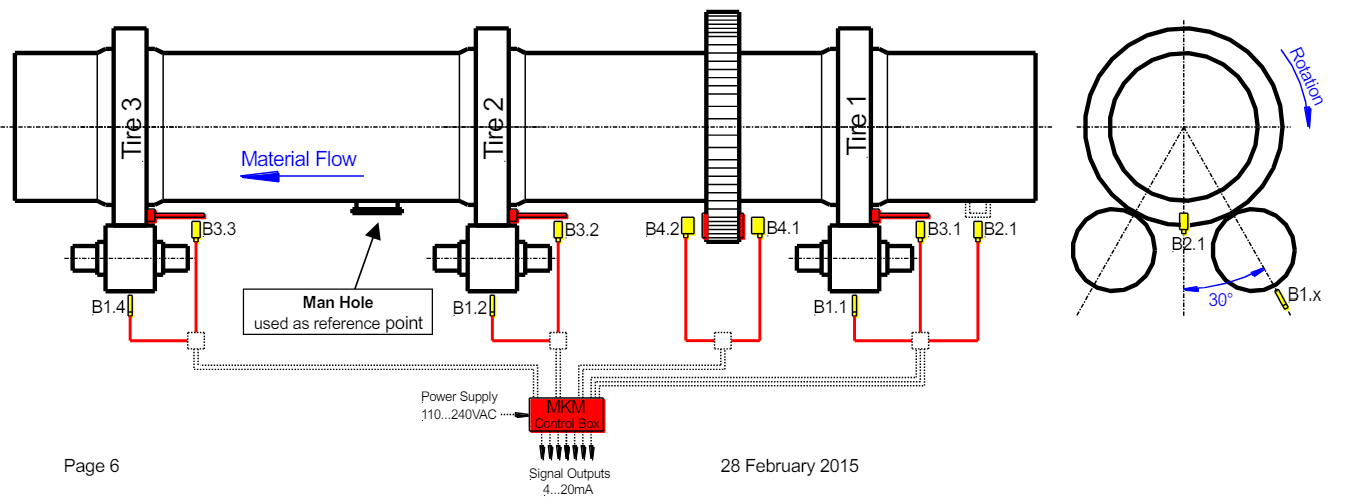Contents
Review and User Guide for the TomTom Tools Mechanical Monitoring System

TO Download this post and all the books and excel sheets and my personal notes and presentations I collected about cement industry in the last 30 years click the below paypal link
The TomTom Tools Mechanical Monitoring System is an advanced tool designed to monitor the mechanical condition of industrial kilns and rotary equipment. This detailed review covers its features, benefits, detailed specifications, and a step-by-step user manual to help users understand and effectively utilize this sophisticated system.
Table of Contents
- Introduction
- Key Features
- Benefits
- Detailed Specifications
- Step-by-Step User Manual
- Examples of Use
- Maintenance Tips
- Frequently Asked Questions
- Conclusion
1. Introduction
The TomTom Tools Mechanical Monitoring System is engineered for professionals in the industrial kiln and rotary equipment sectors who require precise monitoring of mechanical conditions. This system helps maintain the structural integrity and operational efficiency of kilns by providing real-time data on various mechanical parameters.
2. Key Features
- High Precision: The system offers accurate measurements of mechanical conditions.
- Real-Time Data: Provides immediate feedback on the condition of the kiln.
- Durable Construction: Built to withstand harsh industrial environments.
- User-Friendly Interface: Easy to operate, even for those with minimal technical expertise.
- Portable: Lightweight and easy to transport.
3. Benefits
- Accurate Monitoring: Ensures precise data collection for effective maintenance planning.
- Improved Kiln Performance: Regular monitoring helps maintain optimal kiln performance.
- Cost Savings: Prevents major repairs and downtimes through early detection of issues.
- Versatility: Suitable for various industrial applications beyond kilns.
4. Detailed Specifications
- Measurement Range: Varies based on specific sensors included in the system.
- Material: High-grade aluminum and stainless steel
- Accuracy: ±0.01%
- Display: Digital LCD
- Power Source: Rechargeable battery
- Weight: 5 kg
5. Step-by-Step User Manual
Step 1: Setup
- Unpack the Monitoring System: Carefully remove the system from its packaging and check for any visible damage.
- Charge the Battery: Ensure the battery is fully charged before use. Connect the charger to the device and plug it into a power source.
Step 2: Calibration
- Power On: Turn on the Mechanical Monitoring System by pressing the power button.
- Initialize Calibration: Follow the on-screen prompts to initiate the calibration process.
- Zero Calibration: Ensure the device reads zero before starting a measurement. Use the calibration tool if necessary.
Step 3: Measurement
- Position the Sensors: Place the sensors at the designated points on the kiln or rotary equipment.
- Align the Sensors: Ensure the sensors are correctly aligned according to the user manual.
- Take the Measurement: Activate the measurement process by pressing the measure button. The device will scan the mechanical condition and provide real-time data on the display.
- Record the Data: Note the measurement readings displayed on the LCD.
Step 4: Analyze and Adjust
- Analyze the Data: Review the collected data to identify any mechanical issues.
- Make Adjustments: Use the data to adjust the mechanical settings as necessary. Follow the manufacturer’s guidelines for making these adjustments.
- Re-Measure: After making adjustments, re-measure the mechanical condition to ensure accuracy.
6. Examples of Use
Example 1: Routine Mechanical Monitoring
During routine maintenance, the team uses the Mechanical Monitoring System to check the mechanical condition of the kiln. Accurate measurements help identify any issues early, allowing for timely adjustments.
Example 2: Post-Repair Verification
After performing repairs on rotary equipment, the team uses the Mechanical Monitoring System to verify that the mechanical condition is within acceptable parameters. This ensures that the repairs were successful and that the equipment is ready for optimal operation.
7. Maintenance Tips
- Regular Cleaning: After each use, clean the sensors and device body to remove dust and debris.
- Battery Care: Recharge the battery regularly and avoid letting it drain completely.
- Periodic Calibration: Regularly check and calibrate the device to maintain its accuracy.
- Storage: Store the Mechanical Monitoring System in its protective case to prevent damage.
8. Frequently Asked Questions
Q1: How often should the Mechanical Monitoring System be calibrated? A: It’s recommended to calibrate the device before each major measurement session and at regular intervals during use.
Q2: Can the system be used on hot kilns? A: While it is designed to withstand high temperatures, for best results, it is recommended to use the device on cooled kilns.
Q3: What should I do if the system is not providing accurate readings? A: Ensure the sensors are positioned correctly and that there are no obstructions. If the issue persists, consult the troubleshooting section in the user manual or contact the manufacturer for support.
9. Conclusion
The TomTom Tools Mechanical Monitoring System is an invaluable asset for professionals in the industrial kiln and rotary equipment sectors. Its precision, durability, and real-time data capabilities make it a top choice for monitoring mechanical conditions. By following the detailed user manual and maintenance tips provided in this guide, users can maximize the benefits and lifespan of this advanced tool.
For more information or to purchase the TomTom Tools Mechanical Monitoring System, visit the product page.
TO Download this post and all the books and excel sheets and my personal notes and presentations I collected about cement industry in the last 30 years click the below paypal link
